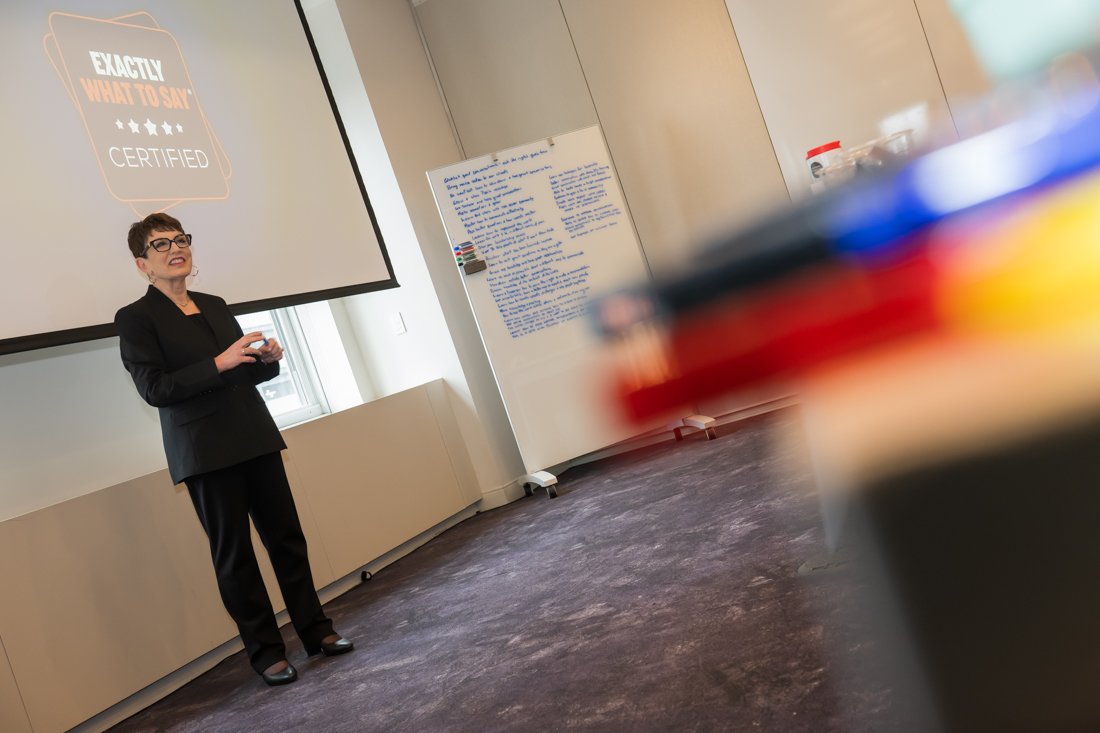It’s tough getting a ‘no.’
Sometimes you know when it’s about to happen, you’ll sense the shift. The conversation becomes an uphill struggle.
Instead of complaining, remember one thing – this is your job.
This is how you make money. This is how you will better your business, your working environment, and your personal life.
Be grateful for the problems, be thankful for the difficulties. Your ability to overcome will enable you to succeed.
Really Listen
If you feel yourself jumping to a conclusion because you’ve heard a similar objection before, please stop!
It’s a mistake.
How you analyze this objection is completely different from how you might have analyzed someone else’s objections in the past.
The key is not to react and to stay curious. You have to really listen.
Have Patience, The Second Mouse Always Gets The Cheese
Staying non-reactive and maintaining curiosity throughout will prevent you from running into something too soon.
The second mouse nearly always gets the cheese. If the first one runs in eagerly, there’s a high probability that it will get trapped. The second mouse sees this and learns from it, avoiding the trap.
Sitting back and listening will enable you to negotiate clearly and start a serious sales conversation.
Create A Safe Space
You know that you can solve their problem, so have faith when embarking on conversations that matter.
Being an expert isn’t about telling someone they’re right or wrong, it isn’t about simply delivering the right service. It’s about creating a safe space for them.
This space is where they can figure out for themselves that you’re the right choice through conversation and understanding. You know where the conversation will end up whether it takes 3 minutes or 30.
Have patience and embrace the process.
Boxing Out The ‘No’s
A ‘no’ is nothing to fear.
Objections are an inevitability and the longer you do what you do, the more often you will encounter them. The ‘no’ is nothing to be afraid of. You can use them to your advantage.
The best thing to do is to own it.
Ask yourself what are the things that people ask you that you wish they wouldn’t?
List all of those dislikes, all of the potential objections, and all of the negatives.
Once you know them, you can steer the conversation away from them or have a solution ready.
Have A More Meaningful Conversation
Listening and navigating correctly will result in a much more meaningful conversation.
Is your client is fearful of something? That fear might be a sticking point preventing them from moving forward. If this is the case, then you have to explore the conversation – explore the ‘what ifs’.
What happens if you hypothetically take the leap?
What about staying put – is that an option?
And what do you benefit from moving forward?
Stare The Monster In The Face
Being candid in your conversations allows you to embrace worst-case scenarios clearly and less fearfully.
When you stare the monster in the face, you quickly realize that the monster isn’t that ugly after all.
Don’t be afraid of this and, if possible, actively encourage a plan B.
You want them to get to the worst-case scenario because if they can accept the worst, then everything else becomes easy.
Fear is no longer holding them back.
How To Handle The Email ‘No’
Handling a rejection through a face-to-face negotiation is one thing, but what happens if you receive a no via email?
This is a different scenario entirely as it is a closed conversation. You need to find a way to re-open it.
The worst thing that you could do is reply to their email.
Try instead sending a text asking if they have a minute to talk. Keep it short and brief and in a way that doesn’t produce ambiguity.
Once you restart the conversation, you can talk everything out.
How To Destroy A ‘No’
Once you’re talking there are some things that you should do to overcome the ‘no.’
- Show understanding. Tell them you understand their concerns.
- Ask them what happened. There might be several factors as to why they are having a change of mind, but until you know for sure there is nothing that you can do.
- Find out what their ideal scenario is. This is where you begin a meaningful conversation with them.
- Find out what happens if they stay where they are.
Journey with them, and let them know that however hard it might be to take the next step, you’ll be there with them to make it easier and a lot less scary.
It’s Not A Fight With Them, It’s For Them
By boxing out the ‘no’s in a negotiation, you’re not fighting against them. You’re actually demonstrating that you’re there to fight for them.
You understand their wants and needs and you know that you can provide them with the best scenario for them.
You’ve gone on a journey with them and allowed them to discover all the potential negatives and reasons to object. And you’re still providing an answer to their problem.
This is how you’ll destroy the no.








